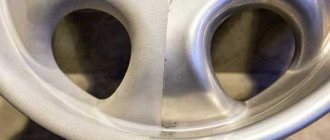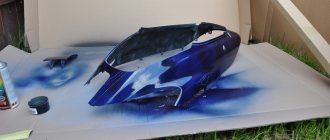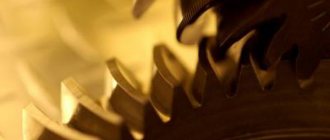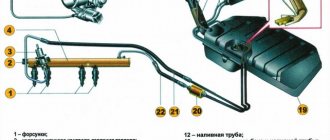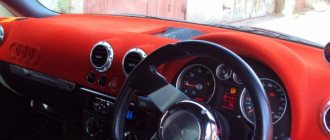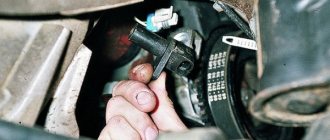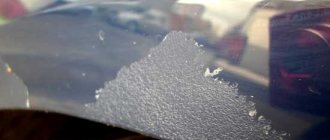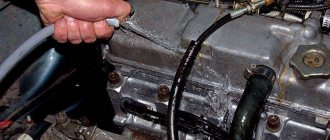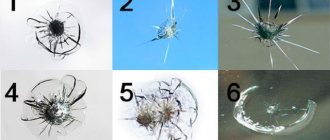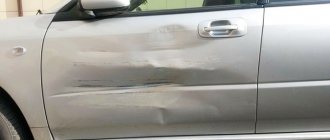Chrome plating and nickel plating of car parts Restoring a vehicle involves a number of technological works, where chrome plating of the car plays an important role.
Note that excessive shine of a car can cause a dangerous precedent in traffic conditions. Knowing this feature, our company offers you professional chrome plating of the body, in compliance with the requirements of the traffic police to ensure the safety of movement on highways. Each car part will have only the color recommended by the traffic police and other supervisory authorities in the field of road safety. Using car chrome plating at home does not always achieve the desired results. You will not be able to meet the clear requirements of GOST or TU for applying a high-quality coating, provided for by the technical regulations of the traffic police and other supervisory authorities. In addition, there is a special procedure for chrome plating of wheels, where excessive shine, which causes danger while the vehicle is moving, should not be allowed. A special place is occupied by chrome plating of the engine, where it is necessary to ensure safety standards to prevent the occurrence of a fire hazard from sudden changes in the temperature of the vehicle while driving.
Preparing the part for chrome plating
The quality of the applied coating directly depends on the condition of the working surface. It must not only be cleaned of dirt and dust, but also subjected to mechanical cleaning with abrasives. Grinding machines should be used to eliminate defects characteristic of problematic parts in the form of minor damage, scale, rust and traces of old paint. The structure of the base of the product itself should remain on the surface. This is a basic preparation condition under which you can chrome plating metal at home, expecting a positive result. Moreover, special attention is paid to persistent grease stains, which also interfere with the chromium application process. At a minimum, aggressive chemical solvents, white spirit or gasoline, should be used for such treatment. For a more reliable cleaning effect from fat and oil films, experts also recommend using compositions based on caustic soda, silicate glue and soda ash, preheating them at a temperature of up to 85-90 ºС
Restoration of chrome body parts
Since the body has the largest number of components, chrome plating of the moldings is carried out after a detailed study and technical characteristics of the part. A separate spraying procedure is provided for headlights and reflectors. Chrome plating on the headlight is carried out only after some parts of the vehicle have been removed. The restoration process is carried out on the basis of an individual technological map for the car body.
Chrome plating of car wheels
To find out how much chrome plating of wheel rims costs, you will need to estimate the scope of work, which will take into account the technical and other characteristics of the material used for the rims. If necessary, you can order colored chrome plating, including a combined type. To calculate the cost of chrome plating of car wheels, the radius of the coating, the material, as well as the cost of work are taken into account in accordance with the order flow sheet. The final price for chrome plating of cast wheels will be announced after a detailed study of the scope of work and technical specifications from the customer.
Processing conditions
During the chrome plating process, regardless of the processing method used, the release of harmful fumes is inevitable, so you should immediately abandon residential premises. The optimal place is a garage, utility room or other technical room. But that's not all. It is necessary to consider stable ventilation with efficient exhaust. You cannot rely on natural weathering, since harmful substances can have an impact already during the work. How to chrome metal at home without causing harm to health? Even if ventilation is available, personal protective equipment should be prepared. The required kit includes construction glasses, a respirator, an apron and rubber-coated gloves.
Features of color chrome plating
In order for the vehicle to have an attractive appearance, the use of colored chrome plating is allowed, where the restoration of plastic components is allowed in any color, as well as for other parts of the car. Based on the technological map, and taking into account the wishes of the customer, our company offers you services for color chrome plating of doors, as well as individual parts of the vehicle. All work is carried out exclusively in production premises, where there is professional equipment of European standard and quality necessary for these purposes.
Orange pigment
Pink pigment
Blue pigment
Gold pigment
Blue glaze
Green pigment
Ultramarine
Emerald pigment
Preparing the container for chrome plating
In any case, to perform the procedure, you will need a conditional bath to keep the part in the working solution. Depending on the size of the part, a 3-liter jar, basin, tank or classic bath can be used. The only limiting parameter of choice is the material of manufacture - glass or metal that does not enter into chemical reactions with the electrolyte. Next, you should start arranging the selected container. First, it must be installed on a flat surface and locked in a stable position so that the chrome plated metal receives an even coating. Secondly, in cold weather the container will need thermal insulation, which can be fiberglass, mineral wool or bulk material (sand, expanded clay). At the same stage, devices or structures are thought out for conveniently holding the workpiece and functional devices that will be used at different stages of the operation.
Sources of electric current
When performing metallization at home, electrodes are required that will be connected to the workpiece to ensure an electrochemical reaction. A negative cathode must be connected to the product, and a positive anode must be connected to the solution. The shape of the electrodes is selected according to convenience; both rod and plate elements can be used. But how can metal be chromed so that the contact does not open during the entire operation? For a circuit that supplies current to the part, an electrical alligator clip should be provided. It will securely grip the workpiece in the desired position. If you plan to process a compact, lightweight part, this grip will also replace the equipment that holds it in the solution. A regular rheostat can act directly as a current source with sufficient voltage. For small workpieces, wires with a cross-section of up to 2.5 mm2 will be sufficient.
Electrolyte solutions
For this procedure, ordinary car enthusiasts use a simplified composition based on chromic anhydride (250 g/l) and sulfuric acid (up to 3 g/l). It is important to keep in mind that the main ingredient of hexavalent chromium is the above-mentioned anhydride, and trivalent chromium is chromium chloride or sulfate. The second scheme is used less frequently, since such a composition has a significant impact on the texture and textural properties of the part. As for the temperature regime, high-quality chrome-plated metal can be obtained at 45-60 °C, but this range can expand depending on the chosen technology. Now we can take a closer look at the methods for implementing the task.
Chrome plating of parts
Electrolytic chromium plating is a technologically complex galvanic process. To obtain high-quality galvanic deposits of chromium, in addition to strict adherence to the technological parameters of the process, it is necessary to use special devices for mounting parts, the presence of powerful current sources, etc.
Before electrolytic chrome plating of a part, you must first carefully prepare its surface, carry out high-quality grinding and polishing of its surface. After mechanical processing, there should be no non-metallic inclusions, cavities, cracks, deep marks, etc. on the surface of the part, because After the chrome plating process, these defects may remain and become even more noticeable on the shiny surface.
After mechanical treatment, the parts are degreased in an organic solvent or an alkaline solution. Gasoline, acetone, alcohol, trichloroethane, etc. can be used as solvents. Parts subject to thick-layer wear-resistant chrome plating are degreased electrolytically. Degreasing is carried out in a solution of the following composition:
Caustic soda (NaOH)—30 - 50 g/l;
Soda ash (Na2C03)—25 - 30 g/l
Liquid glass (Na2Si03) - 10 - 20 g/l.
Current density 5-15 A/dm2. Degreasing electrolyte temperature 60-70°C
The holding time at the cathode is 2-3 minutes, and at the anode 1-2 minutes. After degreasing, the parts to be chrome-plated are first washed with hot and then cold water. Degreasing is considered successfully completed if, after washing the surface of the part, water does not collect on it in droplets, but flows down over the entire surface area. For parts made of high-strength steels, cathodic degreasing is unacceptable. In this case, anodic degreasing or chemical degreasing is used.
Picture 1
Before chrome plating a part, holes on its surface must be closed with lead or other material resistant to chromic acid (Fig. 1). Otherwise there will be areas around the hole that are not covered. The insulation must be flush with the chrome surface.
It should be noted that if the hole (recess) in the part is filled with a non-conductive material, then at its boundary, during the chrome plating process, there will be an increased concentration of current lines of force, and therefore, a greater thickness of the coating will be formed in this place. If chrome plating is not applied to the entire surface of the part, places or areas that are not subject to chrome plating can be covered with thin aluminum foil, tin, etc.
Before carrying out the chrome plating process, special attention should be paid to its installation on the suspension. Since during chrome plating, significant currents are supplied to the parts, which is why it is necessary to ensure reliable and rigid contact in advance, both for hangers with rods and for parts with hangers. The parts to be coated must be mounted on two contact hooks or on one wide one. The contact surfaces of the suspension with parts and the contact bus should be thoroughly sanded and then cleaned. Pendants, with the exception of contact points, must also be insulated. Particularly careful insulation must be performed for parts that are chromium-plated in self-regulating silicofluoride electrolytes, which are highly aggressive.
Any insulating materials of an organic nature can oxidize when left in a hot chromic acid electrolyte for a long time, thereby contaminating it with impurities. Therefore, all insulating materials used for thick-layer wear-resistant chrome plating must be chemically resistant in alkaline degreasing solutions and must withstand, without destruction or oxidation, prolonged exposure to a strongly acidic chrome electrolyte at a temperature of 50-70 ° C.
Figure 2
It is necessary to ensure that all areas of the surface of the part are equidistant from the surface of the anode. When installing the suspension, you must ensure that the parts do not cover each other. The low covering power of the chrome plating bath requires the use of precisely designed hangers and preferably molded anodes. It should also be borne in mind that without the use of auxiliary anodes, the chrome coating may not be deposited on the recessed areas of the part.
In addition, we must remember that the chrome plating process is accompanied by abundant gas formation and gas bubbles accumulating in recessed places (if the part is incorrectly positioned) will prevent the deposition of the chrome coating. The correct and incorrect way to chrome a part is shown in Fig. 2. If the electrodes are incorrectly positioned, a zone is visible on the surface of the part to be coated where gas accumulates. Consequently, the coating thickness here will be significantly less than on the rest of the surface, and pitting is possible in this area.
Figure 3
To protect ribs of different profiles, sharp corners, protrusions and similar elements on coated parts from excessive concentration of current lines on them, wire “protective” screens (cathodes) are used. To create such a screen, use a thin wire with a diameter of 0.1-1.0 mm from any suitable material (copper can be used, but steel is better), which is bent along the profile of the protected edge, protrusion, edge, etc., and fixed to a close distance (from 3 to 5 mm). To protect a sharp protrusion on a part, the protective cathode wire is bent towards the tip. The wire used as a protective cathode is connected to a suitable place on the part or on the suspension to provide current supply to it, see fig. 3. When using conductive screens, it should be taken into account that the consumption of electricity and chemicals. reagents increases.
Unlike the usual stages of surface treatment before applying various galvanic coatings, before carrying out the electrolytic chromium plating process, special surface preparation is carried out, which includes anodic activation, mechanical and thermal treatment. Anodic activation is carried out at a current density of 25-35 A/dm2, or in a separate a bath containing a chrome plating electrolyte, or in a common bath, in which then, after switching the polarity, the chrome plating process is carried out. In the first case, the activation temperature should be 47-53°C; in the second case, it must correspond to the temperature at which, after activation, the chrome plating process will be carried out. Before activation, the parts are kept in an electrolyte without current in order to warm them up. The warm-up duration depends on the mass of the individual part and can range from 30 to 90 seconds. The duration of anodic activation depends on the type of material being coated (grade of steel, alloy, etc.) and the thickness of the applied chrome coating.
Anodes for galvanic chrome plating are made from pure lead or an alloy consisting of 92-95% lead and 5-8% antimony. Anodes made of pure lead are little used, since, being in a chrome plating bath, such anodes are coated to a greater extent with an insoluble and non-conducting film of lead chromate than anodes made of an alloy of lead and antimony. In most cases, anodes are made flat or cylindrical. When chrome-plating a part with a complex configuration, it is advisable to give the anode the shape of a cathode (the shape of the surface of the part).
When chrome plating cast iron parts, anodic activation is carried out either within 5-10 seconds, or not at all, but is replaced by chemical activation in a 3-5% solution of hydrofluoric acid. In this case, the activation temperature should be 18-25oC, and the process duration should be 30-50 seconds. When depositing chromium on parts made of copper or copper alloys, or on parts with copper coatings, anodic activation is not carried out, since copper and copper alloys easily dissolve in the chromium plating electrolyte. To avoid etching and ensure strong adhesion of the chrome coating to the base metal, the parts are loaded into an electrolyte under current.
Mechanical processing is of greatest importance when deposition of thick-layer wear-resistant chromium coatings. If burns or grinding cracks occur during grinding, the chrome coatings on the part will then flake off in such places or may not be deposited at all, and if cracks are present, this can cause a sharp decrease in strength or even possible destruction of the entire part. In order to avoid burns and grinding cracks, steel parts are ground using the mode used for processing chrome parts. Thus, when depositing a protective chromium coating with a thickness of 80-100 microns, the roughness increases by 1.5-2 times. Heat treatment is carried out to reduce residual tensile stresses resulting from grinding parts. The heat treatment temperature should be the same or 10-20°C lower than the temperature at which the parts were tempered during the heat treatment process to obtain the specified mechanical properties of the steel.
The chrome plating bath should be loaded with parts of the same shape and mounted on the same hangers. Pendants and contacts must be made of the same materials. It is recommended to make contact hooks from bronze or copper. Steel is used as a material for pendants; the cross-sections of the pendants are calculated based on a current density of 0.5 - 1.0 A/mm2. After the chrome plating process, it is recommended to clean the anodes from oxides and plaque, and store them in a container with water.
All proposed measures, such as the use of diluted chromium plating electrolytes, the introduction of potassium dichromate or other salts into the electrolytes, as well as the use of unsteady electrolysis, only to a small extent compensate for the poor current distribution in the chromium plating electrolyte.
Therefore, the main method of obtaining uniform chromium coatings on parts is the use of special technological methods and equipment, and the creation of optimal geometric parameters in the electrolyzer (anode location, distance from the electrolyte “mirror”, etc.), improving the primary current distribution over the cathode surface. These include: choosing the optimal relative position of the cathode (coated part) and the anode, the distance between them; the use of additional cathodes (located at the edges of the parts to avoid burns), current-conducting screens (to divert excess current from the edges of the chrome-plated surface); the use of screens made of non-conducting materials (preventing the passage of current to the protruding sections of the cathode); installation of shaped anodes (corresponding to the cathode profile), additional (internal) anodes, etc., as well as the same distance (if possible) between different sections of the anode and cathode surfaces.
Most often, conductive and non-conductive screens are used to improve current distribution and obtain a uniform chrome coating..
The purpose of the screens is to change the path of the current lines of force, to make it difficult for the current to access certain areas of the surface of the part, and thereby even out the distribution of current over the surface being coated, to prevent the build-up of a thicker chrome coating in one place, and not the coating in another.
Figure 4
Screens made of non-conducting materials, placed between the protruding sections of the parts and the anodes, change the path of the power current lines, reduce the number of power current lines flowing to the protruding sections of the cathode, thereby equalizing the current distribution and making it possible to obtain uniform chromium deposits over the entire coated surface. The material of the non-conductive screen (plexiglass, vinyl plastic, fluoroplastic) must be inert with respect to the electrolyte, and its mechanical properties must be rigid enough to be conveniently fixed in a stable position in relation to the area not to be covered (Fig. 4).
Figure 5
Conducting screens (or protective cathodes) made of steel or other metals that do not dissolve in the chromium plating electrolyte are used to divert excess current lines from the edges, protruding parts, etc., and serve to protect against the formation of dendrites, from growth in these In places the parts have thicker coatings than on the rest of the surface. Conductive screens, as well as non-conductive screens, can be placed differently in relation to the part being coated.
Steel protective screens must be installed on or near the part in such a way as to divert excess current from the edges of the chrome-plated surface. The degree of distracting effect of such screens is regulated by their shape, size and distance from the chrome surface. Sometimes the conductive screen is shaped
chrome surface and place it on the part so that it is like a continuation of this surface. To ensure the effective use of screens, chromium deposited on their surface should be periodically removed. Otherwise, due to the growth of dendrites at the edges of the screen, the distribution of current and, accordingly, the deposition of metal on the surface of the chrome-plated part worsens.
Lead can be used as a conductive screen material. This metal is quite soft, easy to cut, it can be trimmed with an ordinary knife, or hammered with a hammer to ensure a tight fit, as a result of which the screen becomes a geometric and electrical continuation of the part being coated. (Fig. 5)
When chrome-plating a recess, for example, the shape of a right angle, the edge of the anode is given an elongated, pointed shape. To obtain a uniform chrome coating, for example, when chrome plating dies, profiled anodes are used that reproduce the relief (shape) of the surface being coated.
Figure 6
Additional anodes must be used to cover recesses, internal surfaces and blind holes..
For all types of chrome plating, additional anodes are necessary, because in the depressions, the local current density is very small and the chromium coating obtained there is either of small thickness or is not deposited at all (Fig. 6).
1,3,5,6,7,8 – device for insulating and fastening the anode, 2-piece, 4-internal anode
Due to the fact that shaped and auxiliary anodes are usually located close to the part being coated, the accuracy of their orientation in relation to the area of the parts where the uniformity of deposit thickness should be improved is of great importance. Therefore, in order to avoid displacement of the auxiliary anode under the influence of gas release, mixing or accidental shock, it is recommended to rigidly mount the anode on the suspension, sometimes even on the part itself, using in both cases reliable insulation of the anode and its fastening, and supplying current to it from the anode rod with a flexible wire .
When chrome-plating the inner surface of cylindrical parts, it is necessary to use a suspension device that ensures a strictly concentric relative position of the anode and the chrome-plated surface. The uneven distribution of power lines along the height of the cylindrical part, due to abundant gas evolution and uneven gas filling in a limited internal space, necessitates the use of cone-shaped anodes, tapering from top to bottom.
The anode should be 1.5-2 times the surface area of the anode. The smaller surface area of the anode compared to the chrome-plated surface leads to the accumulation of trivalent chromium, which requires frequent processing of the electrolyte.
Electrolysis conditions are selected depending on the type of chrome-plated parts and their operating conditions. The most common mode in industry: 60 A/dm2 and 55±5 0C. (for hard wear-resistant chrome plating). Precipitation of wear-resistant chromium from dilute solutions is also possible at higher temperatures and current densities. As already indicated, the appearance of chromium deposits obtained in sulfuric acid electrolytes depends on the cathode current density and solution temperature. By changing the electrolysis mode, it is possible to obtain matte, gray, shiny (wear-resistant and protective-decorative) chromium deposits.
Hard protective wear-resistant chromium coatings are deposited (usually on steel, aluminum or titanium) from standard or diluted electrolytes in the temperature range 45o-65oC and current density range 30-100 A/dm2 (Fig. 7.) In the general case, as already indicated, with 70-750C, the permissible current density in dilute electrolytes can reach 150 A/dm2, which, accordingly, leads to an increase in the deposition rate and a decrease in the duration of chrome plating.
To obtain shiny protective and decorative chrome coatings (the usual thickness of such coatings is 0.3-0.7 microns), it is recommended to use electrolytes with a concentration of chromic anhydride (CrO3) in the range of 300...450 g/l and sulfuric acid (H, S04), respectively , 3..4.5 g/l Due to the fact that the thickness of shiny decorative chromium coatings is only 0.3-0.7 microns and a high speed of the deposition process is not required, during protective and decorative chrome plating they usually maintain a low current density of within 10-20 A/dm2, and a temperature of 48-500 C. Moreover, the lower the electrolyte temperature itself is to the lower limit of the operating temperature, the smaller the range of current densities at which shiny chrome coatings are deposited.
The narrow range of current densities at which shiny chrome coatings are deposited is dangerous because, due to the low dissipative ability of the chrome plating electrolyte, in certain areas of the surface of the part being coated, the current density may go beyond these limits and then dull, non-shiny coatings will form on them. chrome coatings. Therefore, when depositing shiny chrome coatings on parts, it is necessary to especially carefully control the temperature regime (+-50 C)
The most important and necessary condition for obtaining bles
The best feature of chrome coatings is the presence of a shiny backing. Shiny chrome can only be achieved with a shiny base. Therefore, the surface of the part must be carefully ground or polished, and subsequent layers of copper or nickel coatings must also be shiny. If the chrome coating turns out not shiny, then it is almost impossible to correct this defect, since chrome obtained under the above conditions is very poorly polished.
Milky chromium deposits are obtained from sulfate electrolytes at high electrolyte temperatures (65-70°C) and relatively low current densities for the chromium plating process (25-35 A/dm2).
At the end of the chrome plating process, the parts are unloaded from the bath and, together with the pendants, are washed in cold water (in an electrolyte trap) for 15-20 seconds. Finally, the parts are washed in cold running water.
Post-coating treatment
. Parts washed and cleared of insulation are sometimes subjected to heat treatment at a temperature of 150-200°C for 2-3 hours, and then mechanical treatment. For grinding, soft or medium-hard wheels with a grain size from 60 to 120 are used. Grinding is carried out with intensive liquid cooling and at a wheel speed of 20-30 m/s and higher. The rotation speed of the part is 12-20 m/min.
Impurities in chromium plating electrolytes and their effect on the properties of coatings
. The presence of foreign impurities in the electrolyte during the chrome plating process can lead to deterioration in the quality of chrome coatings. The reason for the appearance of impurities is often a violation of the chromium plating process technology. The least accumulation of harmful impurities occurs in electrolytes used for shiny decorative chrome plating. In this case, due to the short time of application of shiny coatings with a thickness of 0.3-0.7 microns, pendants with parts constantly carry electrolyte with impurities on their surface. The need to regularly add either water or a fresh portion of electrolyte leads to dilution of the solution and prevents the accumulation of impurities in it, in concentrations that can affect the quality of the chrome coating.
Trivalent chromium ions.
Trivalent chromium ions Cr (III) are an integral, at the same time necessary and at the same time harmful (in large quantities) impurity for all types of chromate electrolytes for chrome plating. Initially, the presence of a certain amount of trivalent chromium ions during chrome plating is not only useful, but also necessary. In the absence of trivalent chromium ions in the electrolyte, it is impossible to obtain coatings of satisfactory quality.
The maximum permissible content of Cr ions for each chromium plating electrolyte is, as a rule, determined in accordance with the technological features of the process and the requirements for the quality and functional characteristics of chromium coatings (gloss, hardness, wear resistance, etc.). However, it is usually recommended to maintain the concentration of trivalent chromium in the chrome plating electrolyte within 3-5 g/l.
Chromium deposition on steel and cast iron parts.
To improve the adhesion of the chrome coating to the base, steel parts are subjected to anodic activation in a chrome electrolyte before chrome plating (when a hard protective wear-resistant chrome coating is applied). There are two methods of anodic activation: directly in the chrome plating electrolyte or in a special bath.
In the first case, after the parts, after washing, are transferred to the chrome plating electrolyte, anode current is applied to them, and then, after switching the polarity of the rods, the chrome plating process is carried out. With this method, during the anodic period, not only the activation of steel parts occurs, but also their etching (dissolution), as a result of which iron ions can accumulate in the electrolyte.
In the second case,
which is more preferable, a separate bath of chromic acid electrolyte is used for activation. The activation mode (as after warming up) is 25-40 A/dm2, and the temperature is 50-55oC. After activation, the part is transferred to a chrome plating bath without intermediate rinsing. This treatment eliminates the accumulation of iron in the chrome plating electrolyte.
The duration of anodic activation depends on the type of material being coated and can range from 30 seconds. up to 2 minutes. If, when activated in a separate bath, the parts are heated to the required temperature before chrome plating, then there is no need for subsequent heating in the chrome plating bath.
If activation is carried out directly in a chrome plating bath, then before activation the steel parts are kept in an electrolyte without current to warm them up to the temperature of the electrolyte. The warm-up duration depends on the mass of each individual part, and can range from 20 to 90 seconds. This operation is necessary to obtain satisfactory coating quality and strong adhesion of chromium to the base. Some sources recommend preheating the parts in hot water. But the usefulness of such a recommendation is questionable: steel parts will corrode (rust) in hot water, corrosion products will be transferred to the chrome plating bath, which leads to contamination of the electrolyte and the accumulation of iron ions in it, which are a harmful impurity. The temperature of the water in the rinsing container immediately before chrome plating must be hot enough so that the parts heat up already during rinsing.
After anodic activation and a change in polarity, the chrome plating process of the part begins with a “push” of current, at which the current density is usually 2-3 times higher than the standard (working) one. The duration of the current “push” is from 20 seconds. up to 1 minute. Then for 1-1.5 minutes. The current density is reduced to the recommended value. A short-term increase in current density is necessary, since during this it is possible to cover the deep areas of the surface and thereby prevent possible etching of the base in the initial stage of the galvanic chromium plating process.
Chromium deposition on copper, brass or bronze parts.
Shiny protective and decorative chrome coatings are not recommended to be deposited directly onto a copper, brass or bronze coating or base. This is due to the fact that shiny chrome coatings have high porosity and a large number of microcracks that are almost invisible to the eye. Because of this, when operating such coatings in atmospheric conditions, copper and its alloys, interacting with atmospheric gases, will quickly corrode with the formation of carbon dioxide and other copper salts, and corrosion products emerging through pores and microcracks onto the surface of the chrome coating will lead to rapid deterioration of the appearance of the chrome part. In those cases when chrome plating of copper, brass or bronze parts is necessary, the thickness of the chrome coating should be at least 4-5 microns. In this case, the surface of such parts is usually pre-polished to a high degree of gloss. Copper and brass parts, as well as parts with a copper coating, cannot be preheated in a chrome plating electrolyte, because these metals actively dissolve in chromic acid and quickly contaminate the electrolyte with copper ions. Chromium plating of copper parts after heating in a hot chrome electrolyte can lead to a matte finish, so it is necessary to preheat the copper part in a separate hot water bath.
To reduce the dissolution (etching) of copper and ensure strong adhesion of the chrome coating to the base, pendants with copper parts are recommended to be dipped into the chrome plating electrolyte as quickly as possible, in order to reduce the time during which the parts are not energized in the electrolyte.
In order to avoid etching, the solution suggests itself to lowering the part into a bath under current. However, in practice, this method is not very easy to implement, since current begins to flow only at the moment when the suspension with parts touches the support of the cathode rod, i.e. when the parts are already completely in the electrolyte. On the other hand, if a current supply from a power converter is provided to the suspension with parts, then on those parts that are the first to sink into the electrolyte, the current density will immediately be too high, which leads to the appearance of carbon deposits on the lower edges of the parts and deterioration in the quality of the entire chrome coating. In order to prevent this, the parts can be lowered by applying a low current to them, and as soon as all the parts are completely immersed in the electrolyte, the current is increased to the operating value.
As an example showing ways to prevent etching, we can cite the features of chrome plating technology used in printing, where chrome coatings are applied to copper matrices to give the coated parts greater hardness. In offset printing, steel plates coated with a layer of copper are usually coated with a chrome coating up to 1 micron thick. Copper plates are immersed in a chromium plating electrolyte at a minimum current, which, after the plates are completely immersed, increases to the required value. Chromium plating is carried out in an electrolyte of standard composition at a temperature of 38-40°C and a current density of 10-14 A/dm2.
Chromium deposition on chrome parts.
The need to deposit chromium on chromium arises when depositing two-layer chromium from two different electrolytes, when obtaining a deposit of insufficient thickness, or when continuing chrome plating after, for example, turning off the current supply. In all of the above cases, when the current supply is stopped, a thin oxide film quickly forms on the surface of the chromium coating, which does not allow the deposit to be firmly adhered to the coating during subsequent chrome plating. Strong adhesion of the base chromium layer to the previously deposited chromium coating is possible only after removing the oxide film. Therefore, chrome-plated parts, to remove the oxide film, are first treated with anode current (at a current density of 20-30 A/dm2 for 30-40 seconds), and after switching the current polarity, the electrolytic chrome plating process is carried out at the lowest possible current density, which gradually over 3-5 minutes. increase to operating value. For chromium plating, self-regulating silicofluoride or fluoride chromium plating electrolytes are used, which have a stronger activating and dissolving effect than sulfuric acid electrolytes.
Chromium deposition onto a nickel sublayer.
Chromium is ideally deposited on a nickel surface. One of the features of nickel coatings is their pronounced tendency to passivation. If the nickel plating is exposed to air for more than two minutes, it will develop an invisible passive film that will prevent the plating from obtaining good adhesion. In order to avoid the consequences of possible passivation of the nickel sublayer and to ensure reliable adhesion of the chromium layer to nickel, the gap between the operations of nickel plating and chromium deposition should be minimized. In this case, after nickel plating, no special treatment (activation) is usually required before the subsequent application of a thin layer of bright chrome. During the relatively short time that the pendant is transferred from the nickel plating bath to the washing bath, and after washing into the chrome plating bath, an oxide film does not have time to form on the part.
Electrochemical technology
The most common method that is widely used in the domestic sphere. Instructions for its use look like this:
- The prepared container is filled with water approximately 60-70%. It is important to note that the liquid must be pre-filtered - it is best to use settled distilled water.
- The container is heated until the temperature of the contents reaches approximately 60 °C.
- The calculated volume of chromic anhydride is poured. It should be thoroughly mixed in water.
- At this stage, you may encounter the problem of not having the required amount of water. How to chrome plating metal at home if there is a need to adjust the proportions of the solution? It is advisable to avoid this, but in any case, it is recommended to make adjustments in the direction of increasing the volume of water to fill the required level of the container.
- Sulfuric acid is added in the required quantity.
- Having stirred the solution again, it should be allowed to stand for 3-4 hours while applying current at the rate of 6.5 A per 1 liter. As the reaction progresses, the electrolyte will gradually acquire a dark brown tint.
- The current source is turned off, after which the container is infused for another day.
Possible defects when performing chrome plating
If the operation is performed for the first time, then there is a high risk of getting various types of defects. How to chrome metal at home to eliminate this possibility? To do this, you need to know the specific reasons for the appearance of marriage:
- There are small pits on the surface - the part was insufficiently treated with abrasives.
- Peeling of the coating - the current source was supplied with voltage drops.
- The chromium layer is softened - the temperature is too high and the current is too low.
- There is no characteristic shine on the surface - evidence of an overestimated current strength or an excess of the chromium component in the solution.
- The shine is uneven on surfaces - lack of temperature or a sign that the solution was poorly mixed.
- Brown spots are a small amount of acid against the background of an excess of chromium.
How to care for chrome parts
If you need to leave your car in a garage or parked for a long time, be sure to wash all chrome parts of the car, then dry them, this will prevent the appearance of unwanted rust, which will increase wear on the components.
Please note that when washing, you should not direct the jet under the hood so as not to wet unnecessary parts.
The washing process itself is carried out using cold or slightly warm water, but not hot. First, the dirtiest and most dirty elements are washed - wheels, fenders and others. Also, do not use too high a jet pressure, so as not to damage the protective layer.
It is important to know that even if you wash your car regularly, following all the rules and recommendations of the manufacturer, chrome parts will still lose their appearance over time, stop shining so much, and scratches will appear. To avoid this, you should use a special polishing mixture number six or seven.
The components of the paste allow you to polish chrome products, restore their shine, and give the car a neat appearance. In addition, wax, which is also included in the composition, gets into the pores of parts coated with an oxide film.
Alternative chrome plating technologies
Another method of applying chromium is diffuse. But it is used purposefully to modify surfaces through the combined effects of silicon, carbon, aluminum and nitrogen at high temperatures. How to chrome plating metal at home using the diffusion method? The technology involves wetting in hydrochloric acid, after which laying is carried out with powder mixtures, followed by exposure to gases. A subtype of this method is condensation treatment with chromium chloride vapor, but it is usually performed on technologically complex equipment. Also worth noting is a method called “silver mirror”. Its essence lies in the spraying of silver salts in an alkaline solution. Next, it is necessary to use auxiliary solutions containing hydrazine and invert sugar. To give the coating a specific color, special paints and varnishes can be used at the final stage of processing.
How chrome is mined and parts are chrome plated
Custom cars and motorcycles are as American classics as apple pie and Elvis. And to make these cars shine like new, they are covered with chrome. So how is this done?
Florida, USA. Tuned cars are not uncommon here. They like low cars, and such cars look better in chrome. It is believed that the more chromium, the better. Anyone who wants to improve their vehicle should go to a workshop that does chrome plating. Such workshops specialize in removing old chrome coatings and restoring their shine. They do all sorts of things, even chrome plating hotel lobbies.
To dazzle their clients, they need to get top-notch chrome. But the birthplace of chromium is not in Florida, but 13,000 kilometers away - in the northwestern province of South Africa. Here, at a depth of more than 600 meters underground, there are almost 2/3 of the world's reserves of chrome ore. This is enough to keep all cars, motorcycles and other types of transport shining for more than 200 years.
The first task is to find ore. Ore is found in mines underground. Luckily, the black layer of chrome ore is easy to spot against the rocks. The only way to get chromium is with explosives. But if you explode dynamite in the mine, the entire vault may collapse. The solution comes in the form of anfex, an explosive that was specifically designed to explode in a confined space. To prepare the blast site, the drilling rig uses a water-cooled, reinforced drill bit to create a three-meter-long hole. The most difficult thing is to plant explosives and not blow yourself up. Each hole holds 3 kilograms of explosives with remote electric detonators. One mistake and rock weighing millions of tons will collapse into the mine. Therefore, the demolition worker checks the wires several times. And then he leaves. A series of explosions occurs.
Once the dust settles, it will be time to collect the stones. The problem is that the shaft is only 1.7 meters high, so it can only fit a toy digger. The solution came in the form of a specially designed LHD machine that was specially designed for the tight spaces of the mine. Every year, miners blast almost 2 tons of chrome ore in these stuffy and cramped tunnels. But, despite the danger, it is impossible to do this otherwise.
But even after the successful explosion, the valuable chrome ore that was recovered is still mixed with ordinary stones. The ore is sent outside on a conveyor belt for processing. The mixture of ore and stones ends up in a huge rotating cylinder in the plant. Employees control the process. The plant is engaged in the separation of materials in heavy liquids. They use a special centrifuge to separate the waste from the final product. A gray mass called ferrosilicon is added inside the separation drum. The density of ordinary stones is less than that of ferrosilicon, so they float to the top. Valuable chrome is heavier, so it sinks and collects at the bottom.
After the ore is separated, it is piled and loaded onto trucks for transportation. When leaving the mine, the resulting ore can travel in two ways. 70% goes into the furnace to turn into ferrochrome. Thanks to him, we get stainless steel, and our cutlery is so beautiful and shiny. But 30% go a completely different route and ultimately provide an even more brilliant result - to the chrome plating workshop.
In the workshop, the purified ore is smelted in a bath of sulfuric acid. Before applying chrome, you need to scrub off all the rust and dirt. Each part is carefully sanded and polished. Immersion in hydrochloric acid completes the cleaning. Craftsmen can now begin the chrome plating process. But if they just put chrome on it, it will peel off pretty quickly. Chrome plating is somewhat reminiscent of painting. Before applying the gloss coat, you need to use a primer. To make sure the chrome sticks to the bumper, they apply two layers of copper and one layer of nickel. 2000 amperes of electric current are passed through the solution. The current turns positively charged metals into a negatively charged bumper. A quick rinse and it looks good as new. But not really. For a magnificent mirror effect, the final layer is missing - chrome itself. The technician dips the piece into a tank of chromium solution and tries not to think about the electricity bill as he runs current through it. The product spends several minutes in the solution. A layer of chrome just 5 microns thick is applied with a hiss. After five minutes in the bath, you can check the final polished product.
How to restore chrome plating on metal?
Technically, the structure of this coating can only be restored by a pick-up operation. It consists of re-immersing the part in a solution with sulfuric and hydrochloric acids in the required concentration, which depends on the size of the part and the current state of the chromium layer. After this procedure, the workpiece is washed with warm water and left for several hours in a dry place. More affordable methods of restoring chrome coating on metal involve the use of special pastes produced by auto chemical manufacturers. Such products are literally rubbed into the structure of the microfiber coating, forming a protective film and filling small pores of damage. Grinding procedures can also help correct imperfections in the chrome surface, but their effect wears off the coating over time. For this reason, it is recommended to use additional means of protection as a preventive measure. These include the simplest folk recipes based on crushed chalk and ammonia. However, these materials should only be rubbed with soft sponges and napkins.
Examples of our metallization work
The catalog provides examples of our work, where we use proven chrome plating methods and can achieve amazing results in creating high quality machine parts, including:
- plunger elements;
- car body;
- door handles;
- wheel rims;
- mirrors;
- bumpers;
- overlays;
- radiator;
- gratings;
- bolted connections;
- plastic elements;
- aluminum elements, etc.
Chrome plating of the entire car body
Metallization of cast wheels
Chrome plating of the bumper of a vintage car
Metallization of handles for car doors
Logo metallization
Chrome plating of parts
Metallization of a car wing
At the request of clients, we will provide additional photographs and videos of our work.
